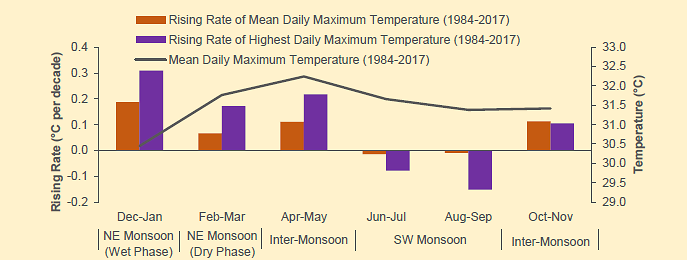SINGAPORE: December and January, traditionally the cooler months in Singapore, experienced the highest rate of increase in extreme warm temperatures between 1984 and 2017, according to the Meteorological Service Singapore (MSS).
In its 2017 Annual Climate Assessment Report released on Friday (Mar 23), MSS said during the two months of December and January, there has been the strongest rate of increase in warm days and decrease in the number of cool days.
Between 1984 and 2017, the mean daily maximum temperatures for December and January increased by 0.19 degrees Celsius per decade, while the highest daily maximum temperatures increased by 0.31 degrees Celsius per decade.
Along with the warmer weather, there has also been an increase in rainfall during these two months, which are the wet phase of the Northeast Monsoon season. This is consistent with a warmer atmosphere being able to hold more moisture, which can then lead to higher rainfall from more severe rain events when they do occur, according to MSS.
In comparison, the maximum temperatures in the typically hotter months of April and May saw a more moderate rate of change over the same period.

“These trends indicate that the gap in extreme warm temperatures between the cooler and warmer months of the year is narrowing,” it said, adding that the reasons for these trends require further studies and research.
The annual mean temperature over Singapore has risen from 1984 to 2017, at an average rate of around 0.26 degrees Celsius per decade.
Monthly temperatures in 2017 were mostly slightly above the monthly 30-year average, with December 2017 differing most from the long-term monthly average with temperatures that were 0.6 degrees Celsius higher.

In January, MSS had announced that 2017 was the warmest year on record for Singapore that was not influenced by an El Nino event, with a mean annual temperature 27.7 degrees Celsius.
The report on Friday showed that the warmest month in 2017 was in June, with an average temperature of 29.4 degrees Celsius across all stations, while the coolest month was in February, with an average temperature of 26.1 degrees Celsius.





